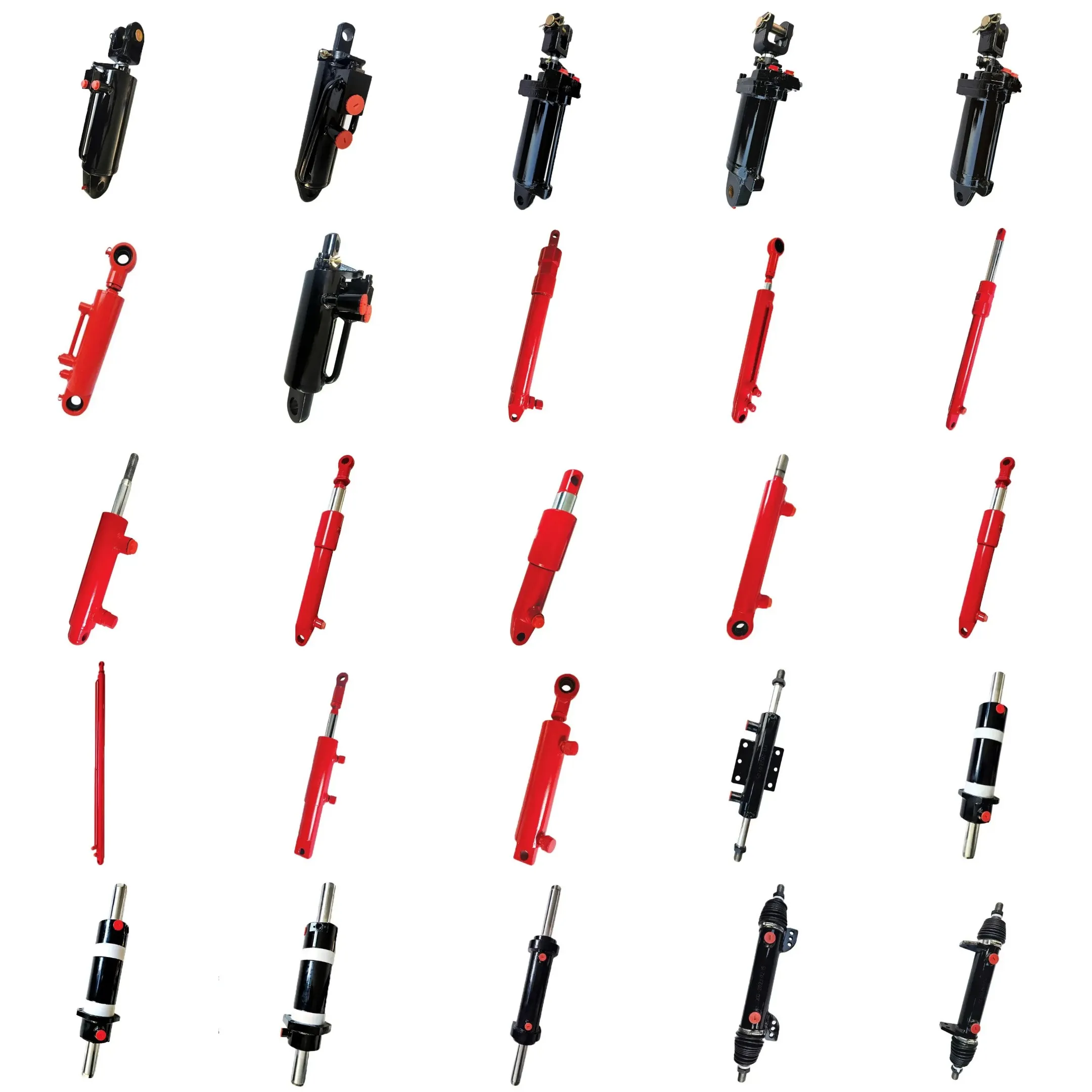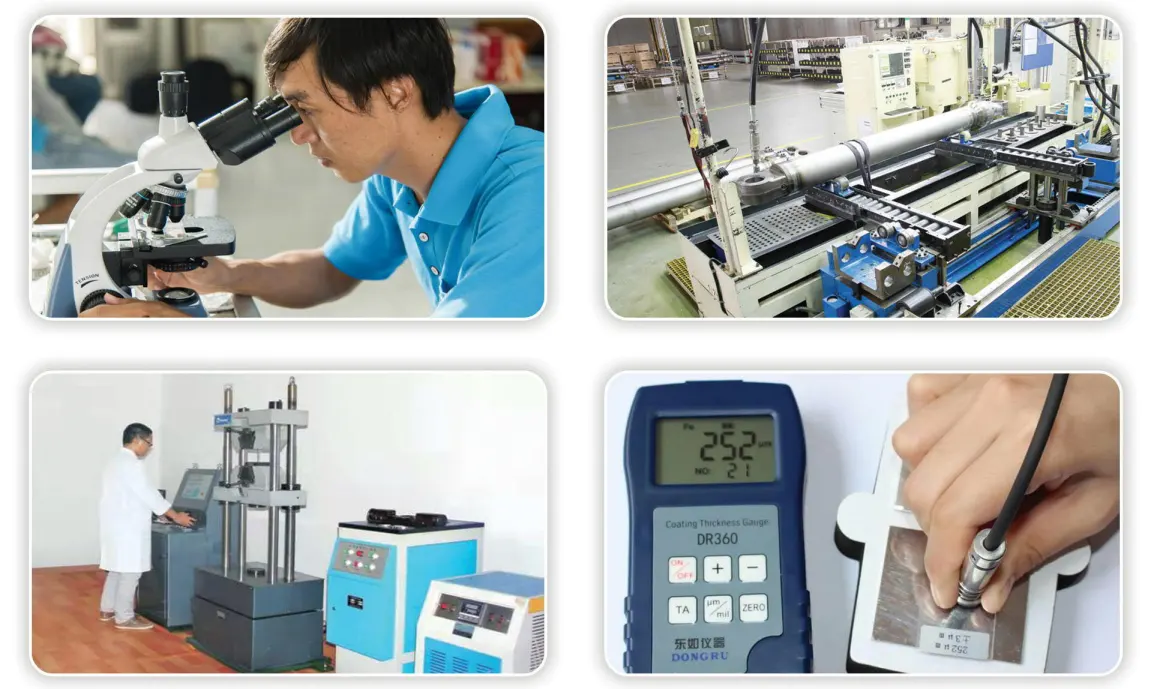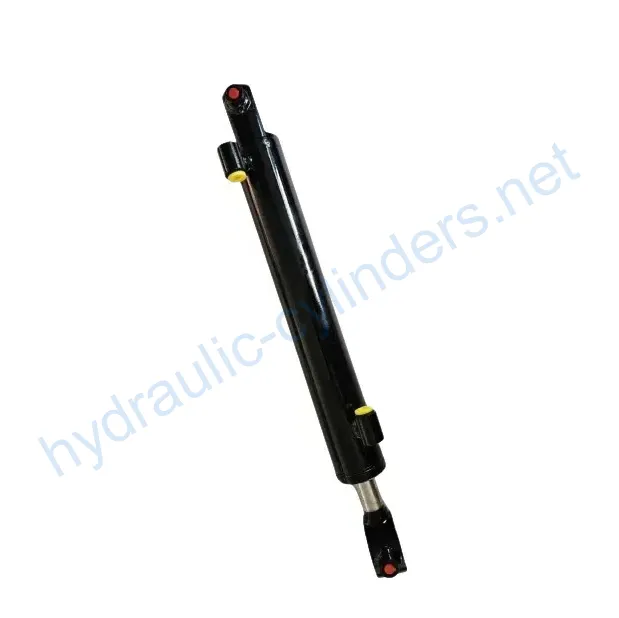CSYG739 Micro Digging Tilt Hydraulic Cylinder
CSYG739 Micro Digging Tilt Hydraulic Cylinder
Product Overview
The CSYG739 Micro Digging Tilt Hydraulic Cylinder is a specialized hydraulic component designed for precision applications in various excavation and construction machinery. This hydraulic cylinder plays a crucial role in enabling controlled movement and tilting of equipment, making it an essential component for efficient digging and lifting operations. With its robust design, it provides the necessary force and control required for maneuvering heavy machinery in tight spaces. The cylinder’s ability to facilitate precise angle adjustments enhances the operator’s effectiveness, allowing for improved productivity in challenging environments.
Specifications
- Cylinder Diameter: 50mm
- Rod Diameter: 30mm
- Travel: 270mm
- Installation Distance: 520mm
Detailed Specifications
The cylinder diameter of 50mm ensures a balance between strength and weight, allowing for efficient operation without excessive bulk. The rod diameter of 30mm offers enhanced stability and minimizes deflection under load. With a travel distance of 270mm, the cylinder is capable of providing a significant range of motion, making it suitable for various applications. Additionally, the installation distance of 520mm facilitates easy integration into existing machinery setups, ensuring versatility across different equipment types.
Features
- High durability for long-term performance
- Compact design suitable for tight spaces
- Precision engineering for reliable operation
- Wide range of applications in construction and excavation
- Customizable options to meet specific needs
Applications
Construction Machinery
The CSYG739 hydraulic cylinder is extensively used in construction machinery such as excavators and backhoes. In these applications, the cylinder enables precise movement of the digging arm, allowing for efficient excavation and material handling. Its compact size and powerful performance make it ideal for working in confined spaces, where traditional hydraulic systems may struggle. The cylinder’s ability to tilt enhances the machine’s functionality, enabling operators to maneuver with greater accuracy.
Mining Operations
In mining operations, the CSYG739 hydraulic cylinder facilitates the movement of heavy equipment required for digging and transporting materials. Its robust construction ensures it can withstand the harsh conditions commonly found in mining environments. The cylinder’s precise control allows for effective digging, minimizing wasted time and maximizing output. The adaptability of the design makes it suitable for various mining machinery, such as loaders and drills.
Agricultural Equipment
Agricultural machinery also benefits from the use of the CSYG739 hydraulic cylinder. It is commonly found in equipment like tractors and harvesters, where it assists in lifting and tilting various attachments. This functionality is crucial for optimizing farming processes, such as plowing, planting, and harvesting. The cylinder’s reliability in performance ensures that agricultural operations can proceed smoothly, even under demanding conditions.
Design Considerations and Selection Criteria
Load Capacity
When selecting a hydraulic cylinder like the CSYG739, understanding the load capacity is paramount. The cylinder must be able to handle the maximum load expected during its operation without failure. This involves considering the material strength, the design of the cylinder, and safety factors. A proper load capacity ensures that the cylinder will operate effectively without risking damage or accidents, providing peace of mind for operators working with heavy materials.
Sealing Integrity
Sealing integrity is another critical design consideration. The hydraulic cylinder must incorporate high-quality seals to prevent leaks and maintain pressure. This is essential for optimizing performance and ensuring efficient operation. The choice of seal materials, such as polyurethane and nitrile rubber, significantly affects the cylinder’s durability and reliability. A well-sealed cylinder minimizes maintenance requirements and enhances overall lifespan, making it a cost-effective choice for users.
Durability and Longevity
The durability of the hydraulic cylinder is vital for its performance and lifespan. The materials used in construction should be resistant to wear and tear, especially in environments with abrasive materials. High-quality finishes and protective coatings can enhance durability, ensuring that the cylinder can withstand harsh operating conditions. A durable design reduces the frequency of replacements and repairs, ultimately saving costs for the operator.
Safety Features
Safety is a crucial aspect of hydraulic cylinder design. Incorporating features such as pressure relief valves and fail-safes can prevent accidents and equipment damage. Operators should always prioritize safety when using hydraulic equipment, and manufacturers must ensure their products meet regulatory standards. A well-designed cylinder will provide operators with confidence, knowing that safety measures are in place to prevent potential hazards.
Ease of Maintenance
Lastly, ease of maintenance is a significant factor in selecting a hydraulic cylinder. A design that allows for straightforward access to components makes it easier for technicians to perform regular maintenance and repairs. Simplified disassembly processes and readily available replacement parts contribute to efficient maintenance routines, reducing downtime and keeping machinery operational for longer periods.
Seals and Lubrication
The effectiveness of the CSYG739 hydraulic cylinder is heavily dependent on the quality of its seals and lubrication. This cylinder utilizes various seals, such as piston seals and rod seals, designed to maintain hydraulic pressure and prevent leaks. The choice of materials like polyurethane and nitrile rubber ensures that these seals can withstand wear and tear while maintaining their integrity over time. The cylinder body and threaded end surfaces are finely processed to enhance wear resistance, reducing the likelihood of seal failure.
Regular lubrication is vital for the smooth operation of the hydraulic cylinder. Operators must ensure that the appropriate hydraulic oil is used and topped up periodically to maintain optimal performance. Proper lubrication minimizes friction between moving parts, preventing premature wear and extending the lifespan of the cylinder. Adhering to a maintenance schedule that includes regular checks of the seals and lubrication levels is crucial for maintaining the operational efficiency of the CSYG739 hydraulic cylinder.
Regular Inspection and Preventive Maintenance
- Routine Inspections: Regular inspections of the hydraulic cylinder are essential to identify potential issues before they escalate. Operators should check for any signs of wear, leaks, or misalignments that could affect performance. Conducting thorough inspections helps maintain the reliability of the equipment, ensuring it operates safely and efficiently.
- Preventive Lubrication: Ensuring that the hydraulic cylinder is adequately lubricated is critical for preventing friction and wear. Operators should follow the manufacturer??s guidelines for lubrication frequency and the type of hydraulic oil to use. Proper lubrication practices reduce the risk of component failure and extend the lifespan of the cylinder.
- 更换密封件: Over time, seals can degrade and may need replacement to maintain the integrity of the hydraulic system. Regularly inspecting seals for signs of wear will help determine when replacements are necessary. Timely replacement of seals prevents leaks and maintains the cylinder’s efficiency.
Installation Guide
Installing the CSYG739 Micro Digging Tilt Hydraulic Cylinder requires careful attention to detail to ensure optimal performance. First, gather all necessary tools and materials, including appropriate mounting brackets and hydraulic fluid. Begin by aligning the cylinder with the existing mounting points on the machinery, ensuring that it is properly oriented to allow for full range of motion.
Using the correct mounting brackets is essential for securing the cylinder in place. Follow the manufacturer’s instructions for securing bolts, ensuring that they are tightened to the specified torque settings. Once mounted, connect the hydraulic lines to the cylinder, ensuring that all fittings are tight to prevent leaks. After connections are made, fill the hydraulic system with the recommended fluid and bleed any air from the lines.
Finally, conduct a test operation to ensure that the cylinder functions correctly. Pay attention to any unusual noises or movements during operation, as these may indicate installation issues. Regularly monitor the installation for leaks or performance inconsistencies, and address any concerns immediately to maintain optimal function.
Maintenance Tasks
Routine Checks
Routine checks of the hydraulic cylinder are essential for maintaining its performance and safety. Operators should regularly inspect the cylinder for any signs of wear, leaks, or damage. Identifying issues early can prevent more significant problems down the line, allowing for timely repairs and replacements. Regular checks should include assessing the condition of seals and connections, ensuring that everything remains secure and intact.
Proper Lubrication
Proper lubrication is crucial for the hydraulic cylinder’s functionality. Operators should ensure that the cylinder is regularly lubricated according to the manufacturer’s specifications. This involves using the correct type of hydraulic oil and applying it at the recommended intervals. Regular lubrication minimizes friction and wear on moving parts, extending the cylinder’s lifespan and maintaining operational efficiency.
Seal Replacement and Calibration Checks
Seal replacement is a vital aspect of hydraulic cylinder maintenance. As seals degrade over time, they must be replaced to prevent leaks and maintain hydraulic pressure. Operators should be vigilant in monitoring seal conditions, replacing them as necessary. Additionally, calibration checks are essential to ensure that the cylinder operates within its designed specifications, allowing for precise movement and functionality.
Safety Considerations and Environmental Factors
When using hydraulic cylinders, safety considerations are paramount. Operators should always adhere to established safety protocols to minimize risks associated with hydraulic equipment. This includes wearing appropriate personal protective equipment (PPE) and ensuring that all safety features of the machinery are functional. Proper training on the operation of hydraulic systems is essential for preventing accidents and ensuring safe usage.
Environmental factors also play a significant role in the operation of hydraulic cylinders. Extreme temperatures, exposure to corrosive materials, and other environmental conditions can impact the performance and longevity of the cylinder. Operators should consider these factors when selecting hydraulic systems for specific applications to ensure that they choose equipment designed to withstand their operating environment.
Fault Diagnosis and Common Issues
- Leakage: One of the most common issues with hydraulic cylinders is leakage. This can occur due to worn seals or damaged connections. Leakage not only affects the performance of the cylinder but can also pose safety risks. Operators should regularly inspect for signs of leakage and address them immediately to maintain efficiency and safety.
- Reduced Performance: If a hydraulic cylinder is not operating at its full capacity, it may be indicative of internal damage or fluid contamination. Reduced performance can lead to slower operation and a decrease in productivity. Operators should check the hydraulic fluid for contamination and inspect the internal components for signs of wear.
- Noisy Operation: Any unusual noises during operation can signal underlying issues. Noisy operation may indicate problems such as air trapped in the system or mechanical wear. Operators should investigate any unusual sounds promptly to prevent further damage and ensure smooth operation.
Troubleshooting Tips
To effectively troubleshoot issues with the CSYG739 hydraulic cylinder, operators should begin by thoroughly inspecting the system for leaks, ensuring that all fittings are secure. If leaks are identified, immediate action should be taken to replace worn seals or tighten connections. For reduced performance issues, checking the hydraulic fluid for contamination and replacing it if necessary can often resolve the problem.
In cases of noisy operation, operators should consider bleeding the hydraulic system to remove any trapped air. Additionally, examining the cylinder for mechanical wear can help identify any components that may need replacement. Implementing preventive measures, such as regular maintenance and inspections, can significantly reduce the risk of these common issues arising in the first place.

About Our Company
We are a leading manufacturer and wholesaler of hydraulic cylinders, offering a comprehensive range of products for various applications. Our company has established itself as a prominent player in both domestic and international markets, recognized for its commitment to quality and innovation. We pride ourselves on our professional expertise, ensuring that all our products meet international certification standards.
Our manufacturing capabilities include state-of-the-art equipment and advanced production techniques, enabling us to produce hydraulic cylinders that meet the diverse needs of our customers. We also offer customized services to cater to specific requirements, ensuring that our clients receive products tailored to their operational demands. Our dedicated after-sales service ensures continued support and assistance to our customers, further enhancing their experience with our products.

Author: lyl
参观我们的 VR 工厂
通过以下方式参观我们的 VR 工厂
液压缸应用:


